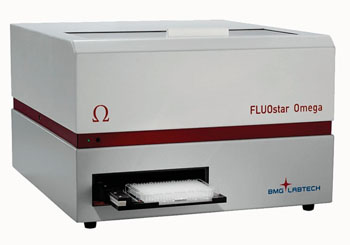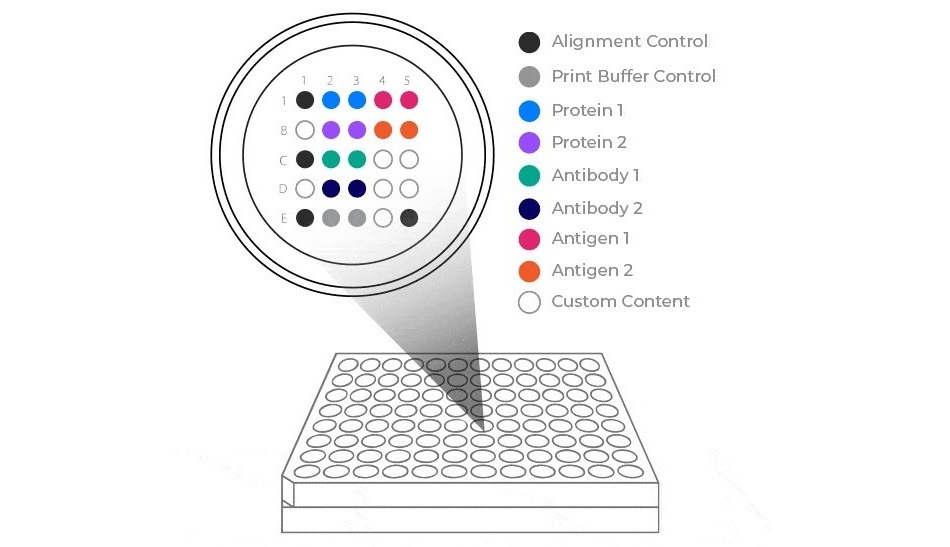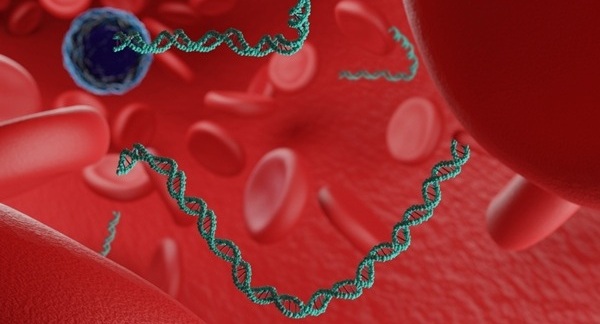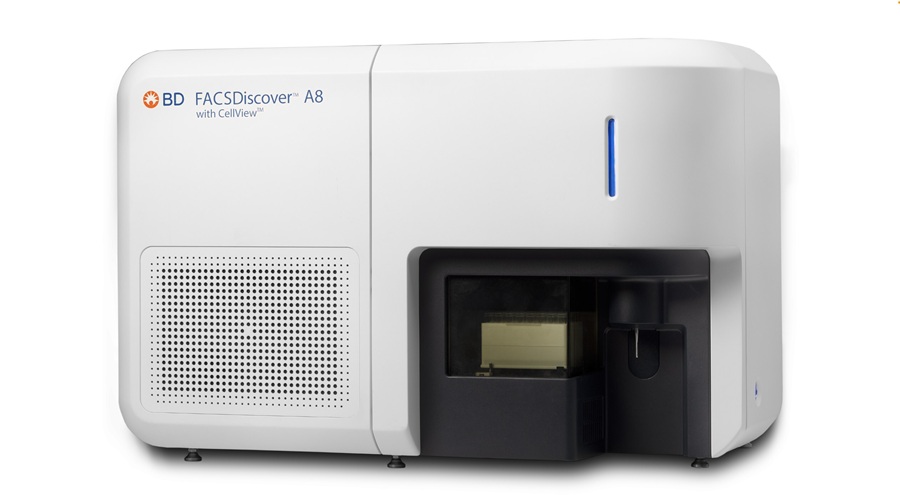New Assay Improves Detection Of Deadly Prion Diseases
|
By LabMedica International staff writers Posted on 28 Apr 2016 |

Image: The FLUOstar Omega microplate reader (Photo courtesy of BMG Labtech).
Transmissible spongiform encephalopathies (TSEs), or prion diseases, are a family of rare progressive, neurodegenerative illnesses that affect both humans and animals and TSE surveillance is important for public health and food safety.
Because TSEs have the potential of crossing from animals to humans, as seen with the spread of mad cow disease, or bovine spongiform encephalopathy (BSE), an advanced assay that offers better sensitivity than currently available tests for detecting a prion disease is essential.
Scientists at the Lethbridge Laboratory (AB, Canada) studied elk brains from animals suffering from chronic wasting disease, a prion disease that affects cervids, which are hoofed ruminant mammals in the deer family, as the model for the assay. Surveillance programs rely on highly sensitive diagnostic methods to detect infections early. Addressing the need to define steadfast analytical performance criteria for prion amyloid seeding assays (ASAs), they developed a method to measure prion protein conversion time (from normal cellular form to prion form) by a combination of statistical analyses to obtain a prion-detecting ASA with a known degree of confidence.
The timed prion seeding assay (tASA) is an in vitro method that mimics the conjectured mechanism of prion propagation in vivo. It is a conversion assay that uses recombinant prion-related protein as a substrate and detects conversion via changes in fluorescence. The team described time specifications for the assay to help avoid false-positive results (30 hours) or false-negative results in weakly positive samples (48 hours), as well as the number of replications necessary for adequate sensitivity (two to 12). The assay is analyzed on a FLUOstar Omega microplate reader (BMG Labtech, Ortenberg, Germany).
They compared the sensitivity of the new assay technique, the tASA to other currently available tests: two bioassays in laboratory rodents and three commercially available TSE rapid tests. The three regulatory-approved TSE rapid test platforms were the Prionics Check WESTERN (Thermo Fisher Scientific, Waltham, MA, USA); the Bio-Rad TeSeE enzyme-linked immunosorbent assay (ELISA, Hercules, CA, USA); and the IDEXX HerdChek CWD enzyme-linked immunoassay (EIA, IDEXX, Westbrook, ME, USA).
The investigators were able to define clear cut-off criteria, allowing determination of TSE-positive and TSE-negative states. Unlike TSE rapid tests, ASAs also have the potential to detect and measure TSE infection in blood, saliva, or urine. This would offer clinical advantages, such as the ability to sample blood instead of relying on more invasive tissue biopsy and to screen blood donations for contamination.
John G. Gray, MS, the lead author of the study said, “We found that the tASA was at least as sensitive as two rodent bioassays and up to 16 times more sensitive than three different TSE rapid tests. We believe this methodology represents the future for prion diagnostics, especially concerning human health, for example in screening blood donations.” The study will be published on April 8, 2016, in The Journal of Molecular Diagnostics.
Related Links:
Lethbridge Laboratory
BMG Labtech
Thermo Fisher Scientific
Bio-Rad Laboratories
IDEXX
Because TSEs have the potential of crossing from animals to humans, as seen with the spread of mad cow disease, or bovine spongiform encephalopathy (BSE), an advanced assay that offers better sensitivity than currently available tests for detecting a prion disease is essential.
Scientists at the Lethbridge Laboratory (AB, Canada) studied elk brains from animals suffering from chronic wasting disease, a prion disease that affects cervids, which are hoofed ruminant mammals in the deer family, as the model for the assay. Surveillance programs rely on highly sensitive diagnostic methods to detect infections early. Addressing the need to define steadfast analytical performance criteria for prion amyloid seeding assays (ASAs), they developed a method to measure prion protein conversion time (from normal cellular form to prion form) by a combination of statistical analyses to obtain a prion-detecting ASA with a known degree of confidence.
The timed prion seeding assay (tASA) is an in vitro method that mimics the conjectured mechanism of prion propagation in vivo. It is a conversion assay that uses recombinant prion-related protein as a substrate and detects conversion via changes in fluorescence. The team described time specifications for the assay to help avoid false-positive results (30 hours) or false-negative results in weakly positive samples (48 hours), as well as the number of replications necessary for adequate sensitivity (two to 12). The assay is analyzed on a FLUOstar Omega microplate reader (BMG Labtech, Ortenberg, Germany).
They compared the sensitivity of the new assay technique, the tASA to other currently available tests: two bioassays in laboratory rodents and three commercially available TSE rapid tests. The three regulatory-approved TSE rapid test platforms were the Prionics Check WESTERN (Thermo Fisher Scientific, Waltham, MA, USA); the Bio-Rad TeSeE enzyme-linked immunosorbent assay (ELISA, Hercules, CA, USA); and the IDEXX HerdChek CWD enzyme-linked immunoassay (EIA, IDEXX, Westbrook, ME, USA).
The investigators were able to define clear cut-off criteria, allowing determination of TSE-positive and TSE-negative states. Unlike TSE rapid tests, ASAs also have the potential to detect and measure TSE infection in blood, saliva, or urine. This would offer clinical advantages, such as the ability to sample blood instead of relying on more invasive tissue biopsy and to screen blood donations for contamination.
John G. Gray, MS, the lead author of the study said, “We found that the tASA was at least as sensitive as two rodent bioassays and up to 16 times more sensitive than three different TSE rapid tests. We believe this methodology represents the future for prion diagnostics, especially concerning human health, for example in screening blood donations.” The study will be published on April 8, 2016, in The Journal of Molecular Diagnostics.
Related Links:
Lethbridge Laboratory
BMG Labtech
Thermo Fisher Scientific
Bio-Rad Laboratories
IDEXX
Latest Technology News
- Pioneering Blood Test Detects Lung Cancer Using Infrared Imaging
- AI Predicts Colorectal Cancer Survival Using Clinical and Molecular Features
- Diagnostic Chip Monitors Chemotherapy Effectiveness for Brain Cancer
- Machine Learning Models Diagnose ALS Earlier Through Blood Biomarkers
- Artificial Intelligence Model Could Accelerate Rare Disease Diagnosis
- AI Saliva Sensor Enables Early Detection of Head and Neck Cancer
- AI-Powered Biosensor Technology to Enable Breath Test for Lung Cancer Detection
- AI Model Achieves Breakthrough Accuracy in Ovarian Cancer Detection
- Portable Biosensor Diagnoses Psychiatric Disorders Using Saliva Samples
- Cell-Sorting Device Uses Electromagnetic Levitation to Precisely Direct Cell Movement

- Embedded GPU Platform Enables Rapid Blood Profiling for POC Diagnostics
Channels
Clinical Chemistry
view channel
Blood Test Could Predict and Identify Early Relapses in Myeloma Patients
Multiple myeloma is an incurable cancer of the bone marrow, and while many patients now live for more than a decade after diagnosis, a significant proportion relapse much earlier with poor outcomes.... Read more
Compact Raman Imaging System Detects Subtle Tumor Signals
Accurate cancer diagnosis often depends on labor-intensive tissue staining and expert pathological review, which can delay results and limit access to rapid screening. These conventional methods also make... Read moreMolecular Diagnostics
view channel
Multiplex Antibody Assay Could Transform Hepatitis B Immunity Testing
Hepatitis B remains a major global health challenge, yet immunity testing has historically been constrained by cost, operational complexity, and single-analyte approaches. Now, a multiplex antibody assay... Read more
Genetic Testing Improves Comprehensive Risk-Based Screening for Breast Cancer
Breast cancer screening has long relied on age-based guidelines, assuming similar risk across all women despite clear evidence that individual risk varies widely. This one-size-fits-all approach can lead... Read more
Urine Test Could Reveal Real Age and Life Span
Chronological age does not always reflect how quickly the body is aging, as biological age is shaped by genetics, stress, sleep, nutrition, and lifestyle factors such as smoking. A higher biological age... Read more
Genomic Test Identifies African Americans at Risk for Early Prostate Cancer Recurrence
Prostate cancer is one of the most commonly diagnosed cancers in men and a leading cause of cancer-related death, particularly in the United States. African American men face a disproportionately higher... Read moreHematology
view channel
MRD Tests Could Predict Survival in Leukemia Patients
Acute myeloid leukemia is an aggressive blood cancer that disrupts normal blood cell production and often relapses even after intensive treatment. Clinicians currently lack early, reliable markers to predict... Read more
Platelet Activity Blood Test in Middle Age Could Identify Early Alzheimer’s Risk
Early detection of Alzheimer’s disease remains one of the biggest unmet needs in neurology, particularly because the biological changes underlying the disorder begin decades before memory symptoms appear.... Read more
Microvesicles Measurement Could Detect Vascular Injury in Sickle Cell Disease Patients
Assessing disease severity in sickle cell disease (SCD) remains challenging, especially when trying to predict hemolysis, vascular injury, and risk of complications such as vaso-occlusive crises.... Read more
ADLM’s New Coagulation Testing Guidance to Improve Care for Patients on Blood Thinners
Direct oral anticoagulants (DOACs) are one of the most common types of blood thinners. Patients take them to prevent a host of complications that could arise from blood clotting, including stroke, deep... Read moreImmunology
view channel
Ultrasensitive Liquid Biopsy Demonstrates Efficacy in Predicting Immunotherapy Response
Immunotherapy has transformed cancer treatment, but only a small proportion of patients experience lasting benefit, with response rates often remaining between 10% and 20%. Clinicians currently lack reliable... Read more
Blood Test Could Identify Colon Cancer Patients to Benefit from NSAIDs
Colon cancer remains a major cause of cancer-related illness, with many patients facing relapse even after surgery and chemotherapy. Up to 40% of people with stage III disease experience recurrence, highlighting... Read morePathology
view channel
Genetics and AI Improve Diagnosis of Aortic Stenosis
Aortic stenosis is a progressive narrowing of the aortic valve that restricts blood flow from the heart and can be fatal if left untreated. There are currently no medical therapies that can prevent or... Read more
AI Tool Simultaneously Identifies Genetic Mutations and Disease Type
Interpreting genetic test results remains a major challenge in modern medicine, particularly for rare and complex diseases. While existing tools can indicate whether a genetic mutation is harmful, they... Read more
Rapid Low-Cost Tests Can Prevent Child Deaths from Contaminated Medicinal Syrups
Medicinal syrups contaminated with toxic chemicals have caused the deaths of hundreds of children worldwide, exposing a critical gap in how these products are tested before reaching patients.... Read more
Tumor Signals in Saliva and Blood Enable Non-Invasive Monitoring of Head and Neck Cancer
Head and neck cancers are among the most aggressive malignancies worldwide, with nearly 900,000 new cases diagnosed each year. Monitoring these cancers for recurrence or relapse typically relies on tissue... Read moreTechnology
view channel
Pioneering Blood Test Detects Lung Cancer Using Infrared Imaging
Detecting cancer early and tracking how it responds to treatment remains a major challenge, particularly when cancer cells are present in extremely low numbers in the bloodstream. Circulating tumor cells... Read more
AI Predicts Colorectal Cancer Survival Using Clinical and Molecular Features
Colorectal cancer is one of the most common and deadly cancers worldwide, and accurately predicting patient survival remains a major clinical challenge. Traditional prognostic tools often rely on either... Read moreIndustry
view channel
BD and Penn Institute Collaborate to Advance Immunotherapy through Flow Cytometry
BD (Becton, Dickinson and Company, Franklin Lakes, NJ, USA) has entered into a strategic collaboration with the Institute for Immunology and Immune Health (I3H, Philadelphia, PA, USA) at the University... Read more

















